This marine protected area was established in 2006 under President Bush in the northwest part of the Hawaiian Island chain. It consists of islands, atolls, reefs, shoals, and submerged banks, and covers roughly 360 000 km2. The conservation area hosts about 7000 marine species and sea birds, with about half of them endemic. They make up a unique ecosystem, which is due to its remoteness one of most pristine and untouched regions.

Largest US Marine Protection Area
by Sovidias
Papahānaumokuākea – this is the long name for the remotest and biggest US marine sanctuary.
First sacred, then exploited
The Northwestern Hawaiian Islands (NWHI) were discovered about 1000 years ago by native Hawaiians, who considered them sacred and made regular visits till about 1700 AC mostly for religious/cultural reasons. The two islands with the most archaeological places are Nihoa and Mokumanamana. 140 religious (‘heiau’) and ceremonial sites were found here. They are close to the latitude of the Tropic of Cancer, where the sun’s path leads directly overhead at Summer solstice. It is believed that therefore early Hawaiians saw Mokumanamana (13 km north of the Tropic of Cancer) somehow as place, where the sun divides the world into the dimensions of darkness (death) and light (life).
After periodically visiting those sacred places from about 1000 AC to 1700 AC, it was forgotten and then rediscovered by the Ali’i (royals) in the1800s, initiating expeditions. It didn’t take long and Western and Japanese whale, seal, feather hunters, and pearl divers exploited the Island’s treasures until the early 20th century.
 | Hawaiian Fish Hook Necklace The Meaning of the Hawaiian Bone Fish Hook The deep connection and reverence the Hawaiians had for the ocean created the meaning behind the Hawaiian fish hook necklace. A bone f... Only $11.96 |
 | Hawaiian Mythology This is a pre-1923 historical reproduction that was curated for quality. Quality assurance was conducted on each of these books in an attempt to remove books with imperfections ... |
 | Ancient History of the Hawaiian People to the Times of Kamehameha I A reprint of this classic of precontact history tracing Hawaii's saga from legendary times to the arrival of Captain Cook, including an account of his demise. Originally publish... Only $11.95 |
Research and Monitoring
One of the first Western research voyages was the Albatross Expedition by the Smithsonian Institute in 1902 to collect samples of marine life down to depths of 3000 m. The next scientific exploration was conducted in the early 1920; scientists from the Honolulu Bernice Bishop Museum and the Smithsonian Institute collected archaeological, meteorological, and marine specimens during the Tanager Expedition.
In the 1970s and 1980s, several monitoring programs were started as collaboration by several agencies (Quadridite Studies), like the marine turtle, seabird, or marine mammal program. It was an excessive effort, which involved about 200 scientists and lasted about a decade. The NWHI are home to several protected species such as the Hawaiian Monk Seal or the Hawaiian Green Sea Turtle, both considered endangered. However, since such a large and remote area is hard to maintain, visits did not become regular until 1996, when the Marine Debris Removal program was established. In 2000, more detailed and regular (biennial) monitoring like coral and reef surveys was introduced through the Reef Assessment and Monitoring Program (RAMP) and is an ongoing effort.
From Near Threatened to Endangered
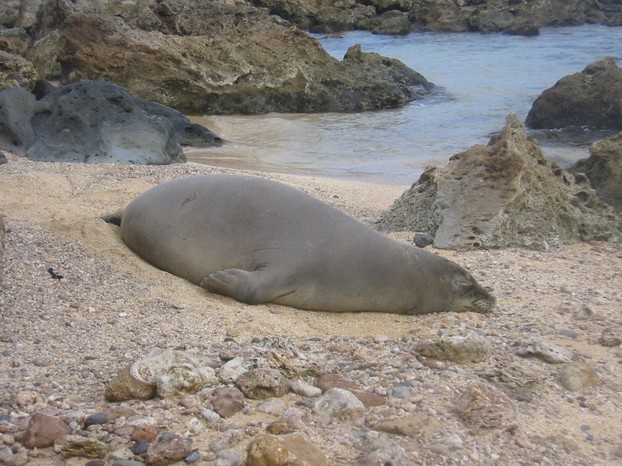 Hawaiian Monk Seal, critically endangered All photos by Sovidias |
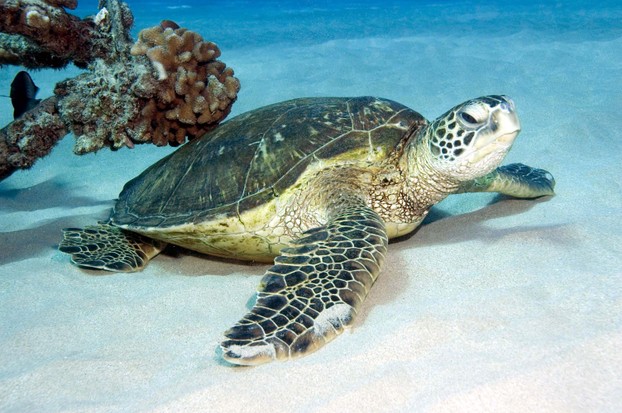 Hawaiian Green Sea Turtle, endangered |
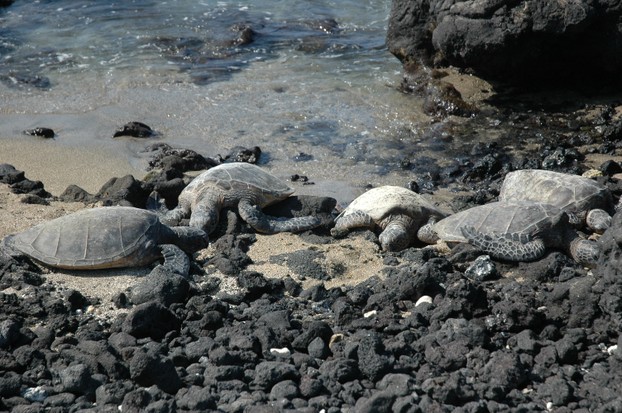 Hawaiian Green Sea Turtle on shore |
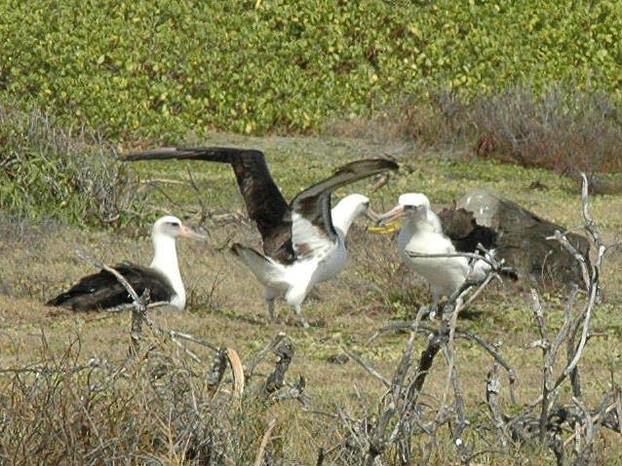 Laysan Albatross, near threatened |
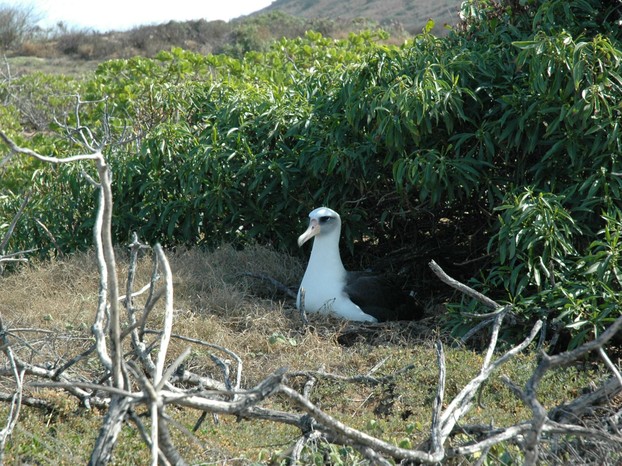 Laysan Albatross |
 | 21st Century Guide to the Northwestern Hawaiian Islands Coral Reef Reserve National Marine Sanctu... This up-to-date electronic book on CD-ROM provides comprehensive information on over 100 marine species at the Northwestern Hawaiian Islands Coral Reef Reserve National Marine S... Only $19.95 |
 | Creating the Papahanaumokuakea Marine National Monument: Discourse, Media, Place-making, and Poli... President George W. Bush established the Papahanaumokuakea Marine National Monument in 2006. Environmental conservation efforts surrounding the Northwestern Hawaiian Islands beg... Only $69.00 |
 | A marine biogeographic assessment of the northwestern Hawaiian Islands LC Number: QH198.H3 M37 2009 OCLC Number: (OCoLC)700950112 Subject: Biogeography -- Hawaii. Excerpt: ... A Marine Biogeographic Assessment of the Northwestern Hawaiian Islands y... Only $44.54 |
 | Necker Island (Northwestern Hawaiian Islands) Please note that the content of this book primarily consists of articles available from Wikipedia or other free sources online. Necker Island (Hawaiian: Mokumanamana) is a small... Only $45.00 |
Off limits
The protected status of the area minimizes human impact and enables the conservation of the cultural heritage and rich natural resources.The Hawaiian Green Sea Turtle is slowly making its come back from the list; the Hawaiian Monk Seal is however one of the most endangered mammals and on the verge of extinction. It's population is decreasing.
Almost every kind of activity is only allowed following a strict permitting process with of a long list of requirements. Exceptions are only for law enforcement, military, and emergency response activities, as well as passing through without interruption.
You might also like
Best Hawaiian Island for HoneymoonHawaii is a great honeymoon spot, but picking an island to vacation on can be...
Hawaii Marine Life Encounters, Above and Under WaterHawaiian marine life is abundant and breathtaking; caution should be exercise...
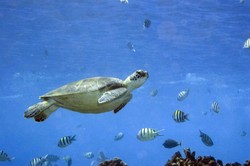


 Festive Meatloafon 07/23/2012
Festive Meatloafon 07/23/2012
 Wild Dolphin Foundation – Experience Spinner Dolphinson 07/06/2012
Wild Dolphin Foundation – Experience Spinner Dolphinson 07/06/2012
 Hawaii Marine Life Encounters, Above and Under Wateron 06/27/2012
Hawaii Marine Life Encounters, Above and Under Wateron 06/27/2012
 A Summer Camp for Nature Freaks and Much Moreon 06/15/2012
A Summer Camp for Nature Freaks and Much Moreon 06/15/2012

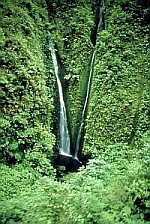
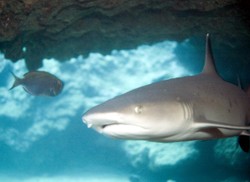
Comments